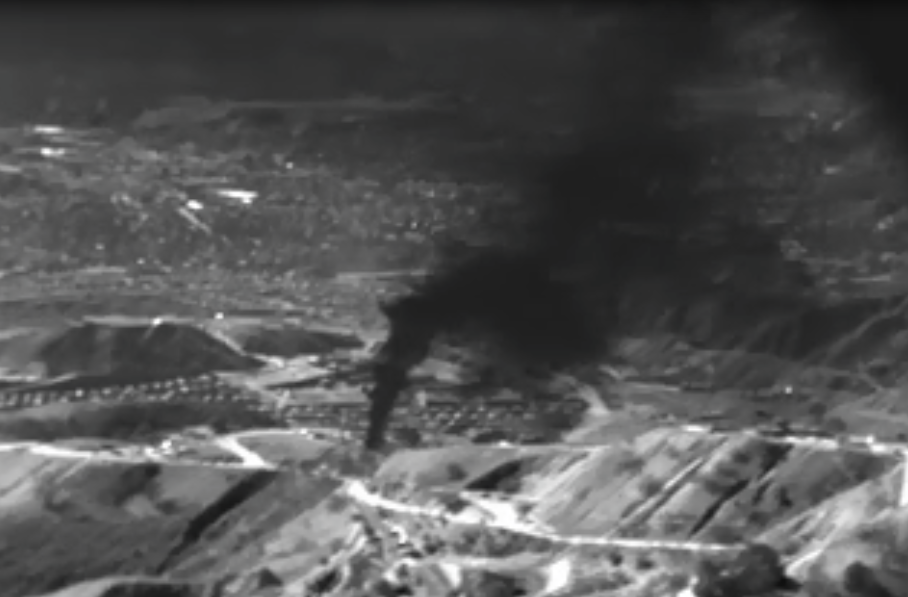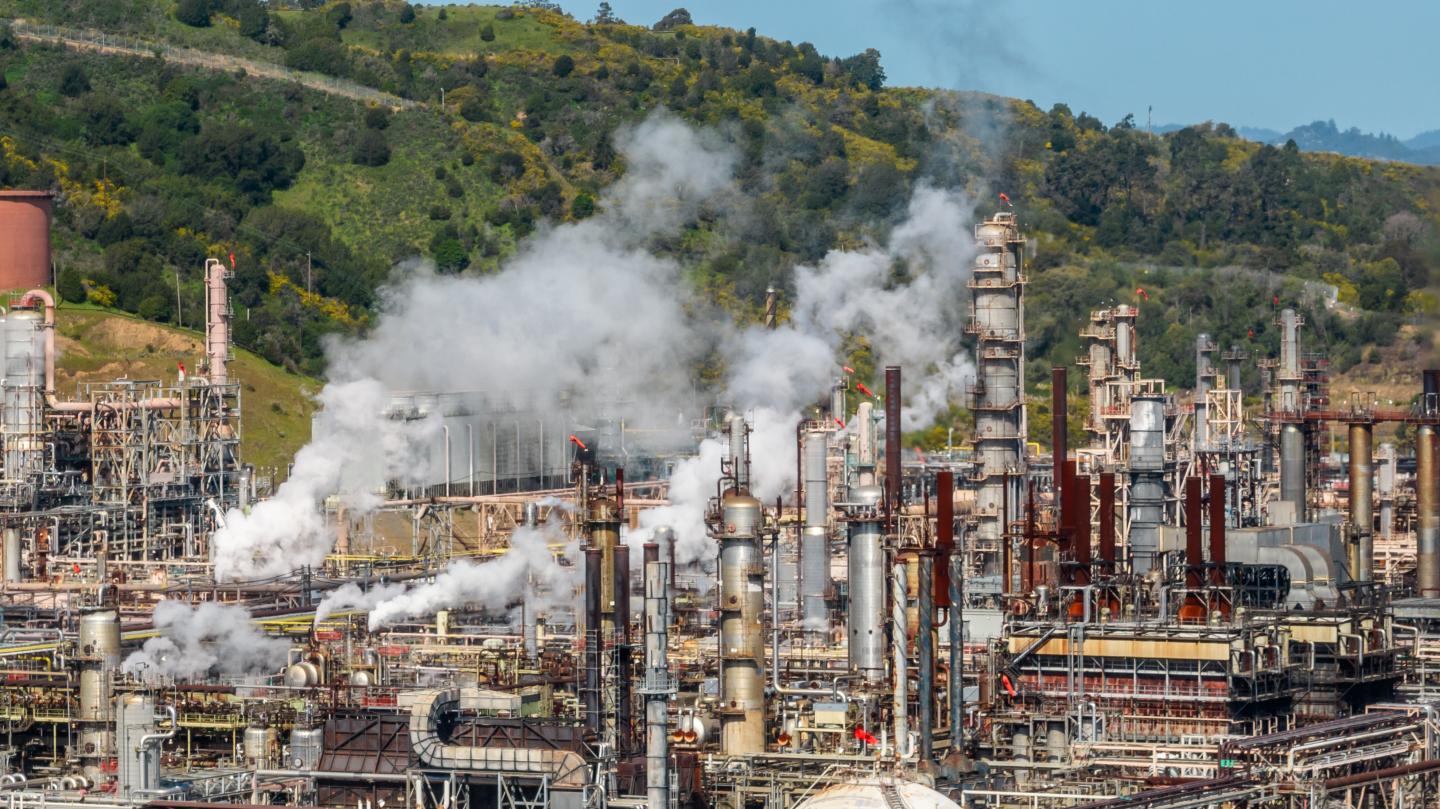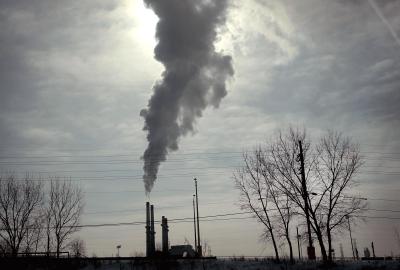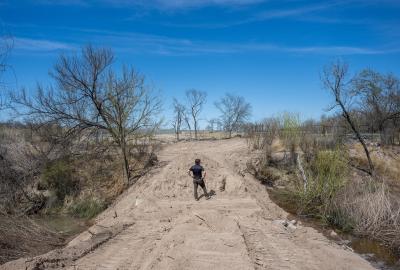Ten years after Aliso Canyon, the worst gas leak in U.S. history, the Trump EPA wants to remove gas pollution safeguards
Erin Brockovich called it “the BP oil spill on land.” In 2015, a leak at an underground natural gas storage facility in Aliso Canyon, near Los Angeles, sickened thousands of people while also releasing 100,000 tons of methane, a powerful climate-warming gas. The leak continued for 100 days before it was plugged.

“Aliso Canyon was a wake-up call to the oil and gas industry and to the public about the climate and health risks inherent to our natural gas system,” says Jon Goldstein of Environmental Defense Fund, the organization that publicly tracked the leak, invisible to the human eye, by flying an infrared camera on an aircraft to “see” the pollution plume.
After the disaster, the federal government adopted industry recommendations to improve safety at gas storage sites, “but they’re vague, ambiguous and underenforced,” says EDF attorney Adam Peltz. And while EDF and others successfully advocated for new state and federal standards to limit climate-harming methane and toxic air pollution more broadly across the oil and gas industry, the Trump administration is now attacking federal standards, which can cut harmful pollution from nearly 1 million oil and gas sites across the country.
Effects of oil and gas methane pollution
“Natural” gas is mostly made of methane, a powerful greenhouse gas. When natural gas leaks, or when operators purposely release it from oil and gas sites, it can also contain toxic air pollutants, like cancer-causing benzene and smog-forming chemicals.
The Aliso Canyon gas leak displaced thousands of residents from their homes, many of whom reported experiencing severe nose bleeds, headaches and other symptoms. A 2025 UCLA study found that pregnant women living in the impact zone were nearly 50% more likely to have low birth weight babies, who are at increased risk of developmental delays, learning disabilities and chronic health issues.
The effects of methane on the climate are also profound. That’s because methane has more than 80 times the warming power of carbon dioxide in the first 20 years after its release. It’s responsible for about 30% of the warming we’re feeling today. The impact of the methane released by the Aliso Canyon leak is equivalent to the yearly climate pollution of a large European country.
“Controlling methane is crucial for our climate, for energy security and our health,” says Goldstein.
Preventing both big methane leaks like the Aliso Canyon disaster and millions of smaller ones from oil and gas sites in the U.S. and around the world is the key to slowing down the breakneck pace of global warming and avoiding some of the worst impacts of climate change, says Goldstein. “Unfortunately, 10 years later, most people still don’t know and still haven’t acted upon the fact that stopping methane pollution is the fastest way to slow climate change now.”
Environmental news that matters, straight to your inbox
Success in cutting methane pollution
Together with partners across academia, government, industry and advocacy groups, EDF has been spearheading an effort to reduce methane pollution in the U.S. and worldwide. The organization and its allies have supported major scientific advancements to measure and track methane emissions and advocated for companies and governments to set and meet methane standards.
In the decade following the Aliso Canyon disaster, those efforts have seen considerable success. Several states, including California, Colorado, New Mexico and Pennsylvania, have created safeguards to reduce oil and gas methane pollution within their borders. And the U.S. Environmental Protection Agency issued standards that went into effect in May 2024 to limit methane leaks from nearly one million oil and gas production sites across the country.

The standards were expected cut millions of tons of climate and air pollution and generate nearly $100 billion in health benefits by 2038, according to EPA analysis. They would prevent hundreds of premature deaths, 97,000 cases of asthma and 35,000 lost days of school each year.
Those weren’t the standards’ only projected benefits. Since 2012, when the EPA’s first set of methane-reducing clean air rules went into effect, oil and gas companies have saved $2.6 billion worth of natural gas — demonstrating that “with the right practices, it’s possible to safely and economically manage methane as we transition to safer forms of energy,” says Goldstein.
But the Trump EPA is working to undo the standards. In September, EPA Administrator Lee Zeldin put the rules on pause — unlawfully so, say EDF and a dozen health, environment and community groups, who have filed a lawsuit challenging the rule’s suspension.
“Our nation and communities have much to lose from a delay of these standards,” says EDF attorney Grace Smith, who points out that “several of our nation’s largest oil and gas companies have been adopting these technologies for years.”
Federal methane standards are among more than 30 EPA protections that the Trump administration is seeking to tear down in its pursuit of a fossil-fuel-first energy agenda. Despite the progress made after Aliso Canyon, and the health and economic benefits of methane rules, the lessons from this 10-year-old disaster seem to have been forgotten.


